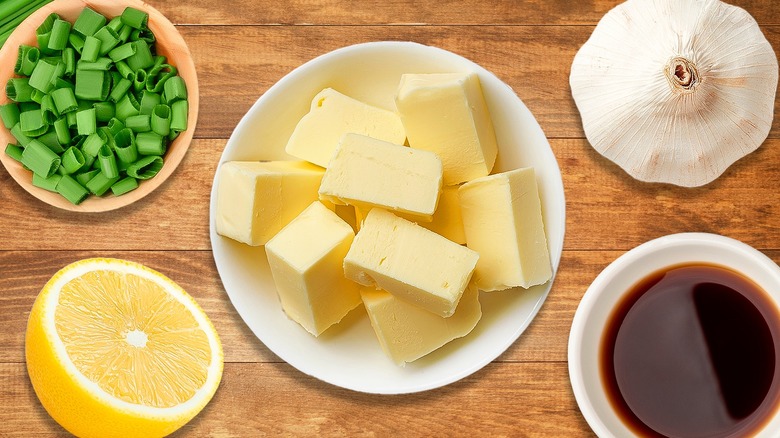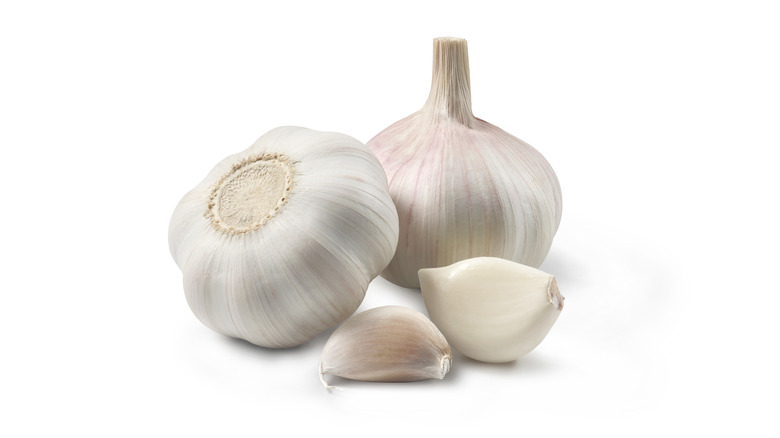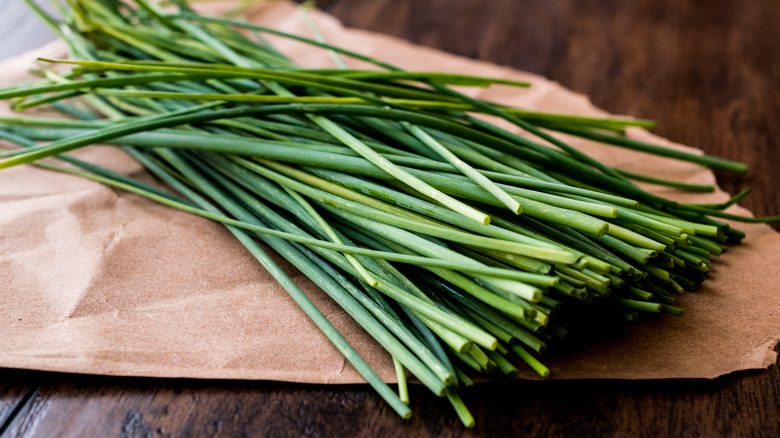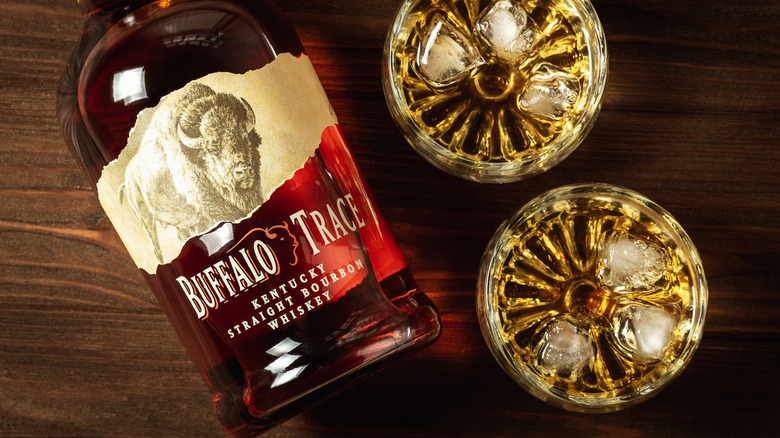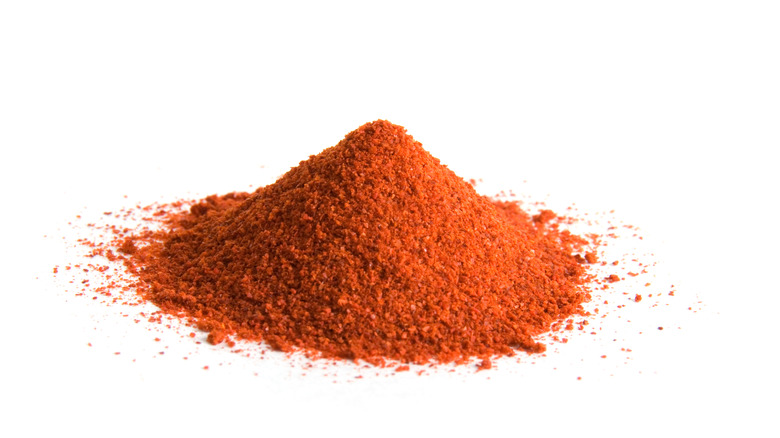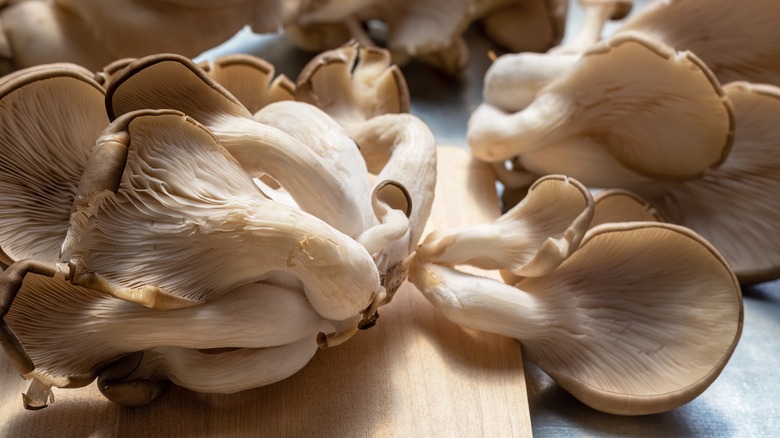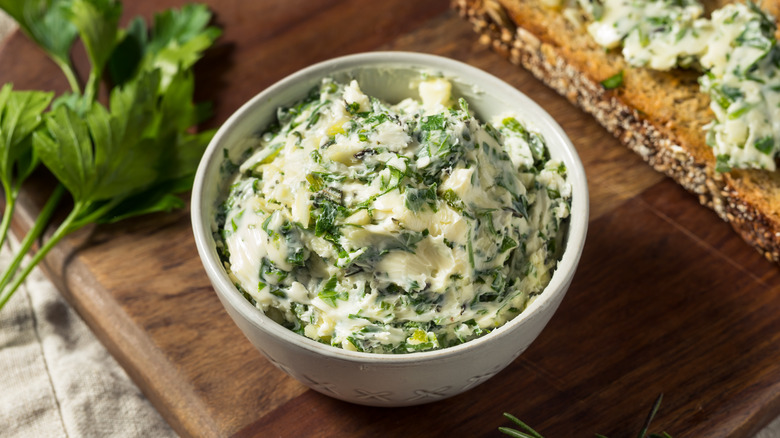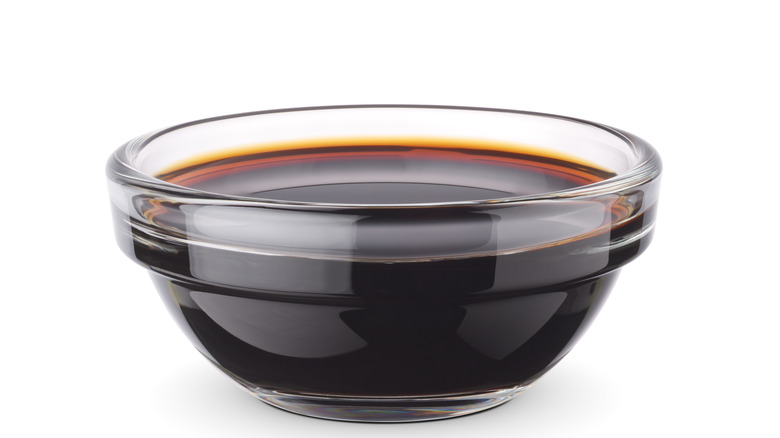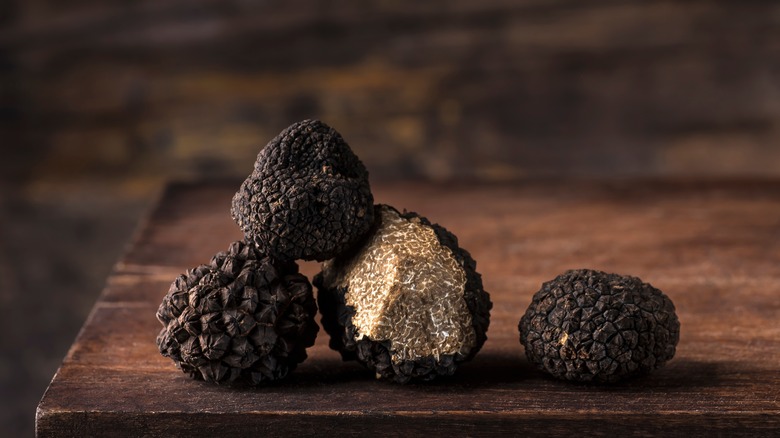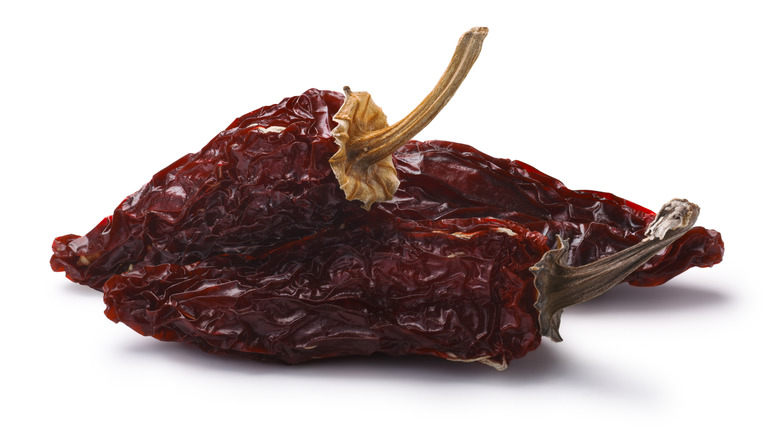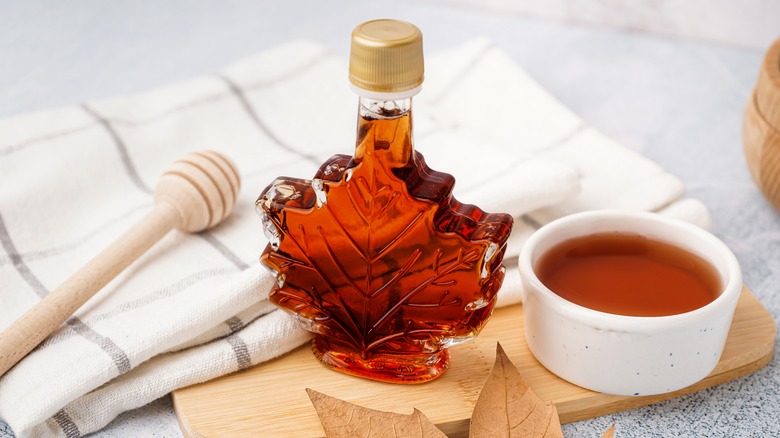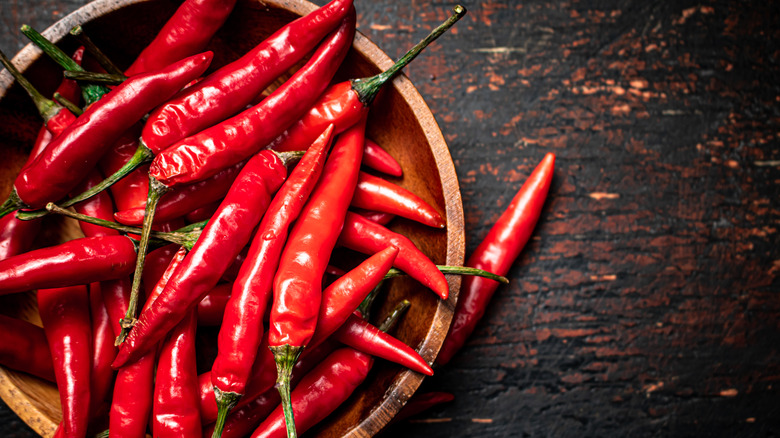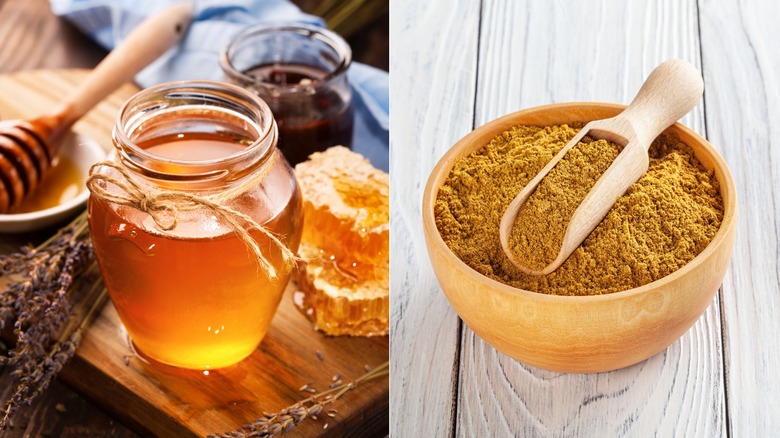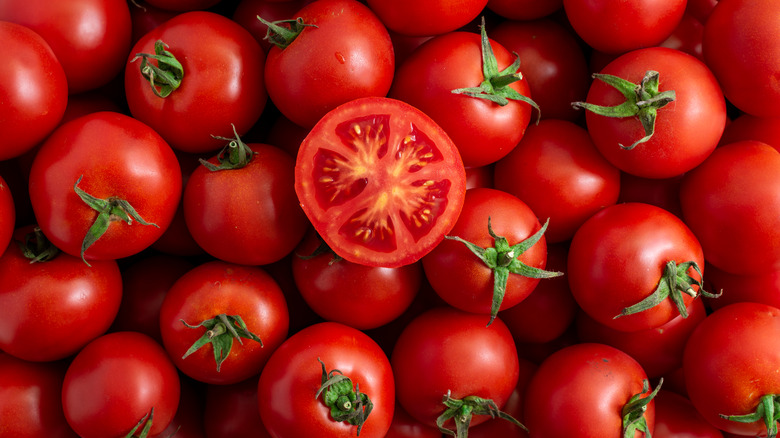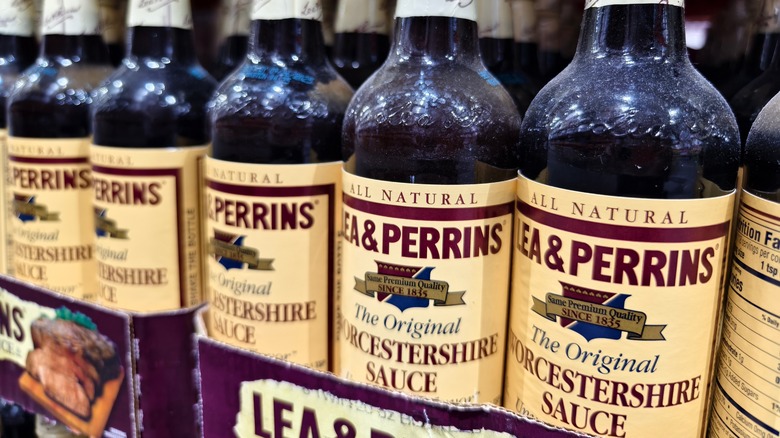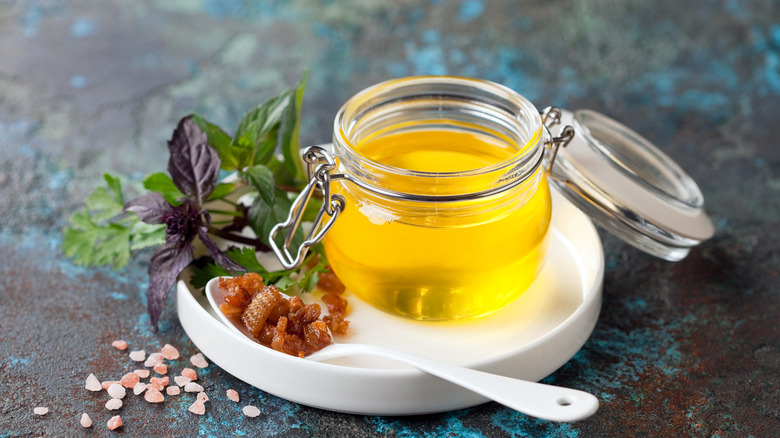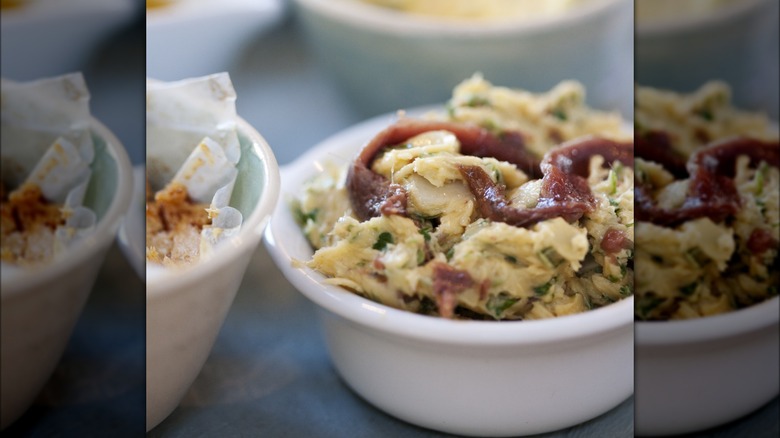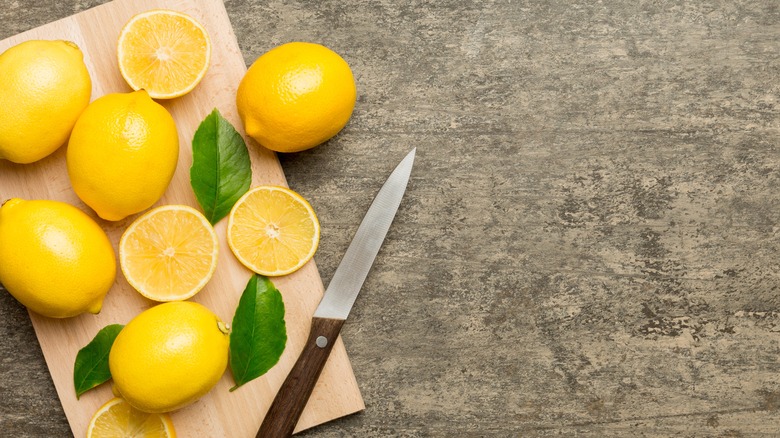18 Savory Ingredients You Should Be Adding To Your Butter
Butter is so versatile and creamy that it gives whatever it touches an instant flavor boost. Indeed, it is such a perfect food that one might wish that it came in more flavors. But while you might not be able to find a range of different butter flavors at the grocery store — at least not like ice cream or chips — there is nothing stopping you from creating your own flavored butter at home, using whichever ingredients strike your fancy. Just be sure to refrigerate your butter after you make it, or you'll end up with a product that melts too soon for comfort.
In fact, there is a name for this concoction. It is typically referred to as compound butter and is made by introducing a new ingredient into the butter and mixing it until it becomes smooth and uniform. Herb-infused butter, for instance, is a popular choice, with combinations like rosemary and thyme or parsley and chives offering fresh, aromatic notes that can elevate grilled meats. Likewise, garlic butter can turn a plain loaf of bread into a meal unto itself. Sweet items can also successfully be mixed into butter, but in our below list of ingredients we think you should be adding to your butter, we're going to stick to savory applications.
1. Garlic
If you've ever tasted garlic bread, you'll know just how well garlic and butter go together, since the latter is essential to the proper spreading of the garlic across the bread. So why not swap two ingredients for one by preparing garlic butter ahead of time? That way, you'll have it nice and ready to melt onto your baguette.
As a bonus, you can also use the garlic butter in other ways, as in this flavorful garlic pasta sauce made with just a handful of ingredients. You can even amp things up by roasting the garlic before you mix it into the butter, while a hint of chipotle might be just what you need to bring out the flavors of the garlic and butter even more.
2. Red wine
Red wine is a major cooking staple. You can pour it into a wide range of meat sauces to deepen the flavor, and it makes an excellent tool for deglazing a pan during a roast. But red wine also pairs well with butter (because what doesn't?), and since it's already a liquid, it's easy to mix in.
This trick is especially useful if you opened a bottle of red wine a day or two ago and don't know what to do with it. You could drink it, of course. But if you're not in the mood, it might go to waste, as it won't last on your counter for more than a few days before it begins to spoil through oxidization, eventually turning to vinegar. The solution is to cook with it by boiling the red wine into a reduction before blending it with cubed butter and some herbs of your choice.
3. Chives
Once you learn how to make compound butter in a food processor — instead of mashing it by hand as they did in the olden days — you'll want to make it all the time. This is especially true if you favor simple additions like chives. Indeed, all you have to do is cube the room temperature butter and zap it with the chives until smooth.
Be sure to chop those chives first, so they can distribute evenly throughout the butter. Chives are an especially good choice for compound butter because, in addition to giving that plain white or yellow log a pop of color, their tanginess helps cut through the richness of this beloved dairy product. This gives it a fresh twist that is perfect for grilled chicken or corn on the cob.
4. Bourbon
Bourbon is a great addition to desserts. Its caramel notes help bring out the sweetness in such items as ice cream and maple syrup, while also highlighting their flavor complexities. But it can also be used on savory items to great effect, especially when mixed into butter.
Indeed, bourbon on its own can be an overpowering ingredient. And while using too little might mean not tasting it at all, adding too much can end up taking over your dish. Incorporating bourbon into butter in the right quantities, and then using that butter as an ingredient in your recipe, helps keep the strength of bourbon in check. Use yours as a topping for a juicy filet mignon or mix it in with some caramelized onions or carrots.
5. Spices
While "spices" are an incredibly broad category of ingredients, it's also true that pretty much any spice you choose will help you make a delicious compound butter. Take this cowboy butter, for instance. It combines paprika, cayenne, lemon, Dijon mustard, garlic, parsley, chili flakes, thyme, chives, salt, and pepper. It may seem like a lot is going on here, but when this stuff is melted and poured over your rib-eye, you won't be complaining.
Alternatively, you can keep it simple and just mix one or two spices into your butter. A nutmeg butter might be a good addition to some mashed potatoes, or a compound butter with Italian seasoning could help you take your garlic bread to the next level. A more sophisticated compound butter might even use saffron, which would provide a beautiful yellow color along with a warm and earthy flavor.
6. Mushrooms
While it can be a little tricky to mix actual mushrooms into butter, especially for textural reasons, there should be no obstacles to pouring in some dried mushroom powder. Porcini mushroom powder works especially well here, given that their rich, nutty flavor can stand up to the richness of the butter.
This ingredient alone will get you far, especially if you plop the mushroom butter on a steak — this type of meat is often paired with mushrooms, as in beef stroganoff, for example. But if you're looking to pull out all the stops, you may as well reach for a chateaubriand with savory compound butter. Here, the butter is mixed with that porcini mushroom powder, but also with black garlic, rosemary, flaked sea salt, and pepper. Together, these ingredients conspire to provide a complex, robust flavor worthy of a cut of meat as fine as the chateaubriand.
7. Fine herbs
You may have come across herbs in your butter before. Maybe you ordered a particularly special steak at a restaurant that came with a dollop of tasty butter on top, complete with flavorful but unidentified green specks.
We're here to tell you how to repeat that experience at home, and it's not complicated in the least. In fact, it's all about selecting the right herbs. For instance, parsley, chives, and tarragon work especially well in herby compound butter used on steaks, either alone or together. Or you can opt for whichever herbs your own palate dictates, such as rosemary or sage. But ultimately, the key is to use fresh herbs, whose flavor is far more powerful than anything you'll find dried and packaged into a jar.
8. Soy sauce
Plain and simple soy sauce, when mixed into butter, can create practically a whole new product — one that perfectly combines rich creaminess with salty umami. This compound butter can be added to any savory dish where you might otherwise use salt and butter, as the soy sauce will take care of the salt factor while introducing more depth of flavor.
But you can also take it a step further and introduce other typically Asian sauces to the mix. In this Korean barbecue compound butter recipe, the soy sauce is combined with sugar before being reduced and then mixed with chili flakes, garlic, and scallions, along with the butter. Scoop some of this butter on top of your Korean barbecue steak or roasted vegetables for a sweet and salty kick.
9. Truffles
Making your own truffle butter is likely to be much better than buying it at the store. Unless you see pieces of actual truffle in that butter, it's likely that the manufacturers have simply used a truffle flavor rather than the real thing — much like in the case of pretty much any truffle oil you can find on shelves.
But if you can get your hands on your own truffle — and your own butter, for that matter — then you can control the process and ingredients from the start. Just thinly slice the truffle, put it in a food processor with some room temperature butter, and blitz away. Just don't go too overboard with the pulsing — you'll want those truffle pieces to remain large enough to see, dotting the butter throughout, or you might end up with a gray blob. Once it's ready, spread the truffle butter over your garlic bread for a sophisticated version of this popular treat.
10. Chipotle
Butter doesn't easily get smoked, so if you want a smoky butter flavor on your steak or any other dish, your best bet may be to mix in some smoky chipotle peppers. For best results, mince the peppers and mix them together with some minced garlic and cilantro, either by hand or in a food processor.
You can use this butter on any dish that is enhanced with smokiness, but it goes especially well with a chipotle-marinated steak. To really amp up the smoke factor, you can even grill the steak over an open fire. Let it rest and cool down slightly before adding the butter, as you don't want it to melt completely before you even get a chance to plate the meat.
11. Maple syrup
Although maple syrup is not a savory ingredient as such, it can certainly be used in savory applications — which is why we're including it in this list. In particular, a maple syrup compound butter makes a great complement to steak. If you want to play up the sweet and salty factor, you can even use salted butter to create this steak topping.
Maple butter can also help give complexity to your breakfast bacon or act as a simple glaze for a ham. Indeed, it works well with any hearty meat that can handle a bit of sweetness, like pork chops or ribs. And don't be afraid to play around with it. Add a dash of bourbon to bring out the sweet caramel taste or pour it on roasted vegetables instead of meat.
12. Chili
There are many great ways to spice up a dish, but one of the most interesting is to create a compound butter with chili flakes, chili powder, or chili crisp. The latter condiment is made up of oil chili, onions, and salt in perfect proportions, creating an ingredient that is both spicy and well-balanced. You may even want to add a dash of lime juice to bring out those flavors even more.
Once you've prepared this chili compound butter in your food processor, and it's sitting in your fridge ready to go, you'll have a quick and easy ingredient to add to your steaks to instantly elevate their flavor and presentation. And feel free to use this butter on any other dish you think could benefit from some extra spice. Indeed, you can rub it on chicken, pork, or even serve it with fish.
13. Honey and curry
You may know honey as a sweet ingredient used to flavor teas or as a topping for some desserts. But it also works well with savory ingredients, including spices that might surprise you. In fact, honey and curry powder are ideal bedfellows for compound butter, where they join up to produce a flavor that is warm and sweet.
To make yours at home, you can stick with honey and curry powder — or, as in this honey-curry compound butter, you can add cayenne pepper for extra spice, as well as salt and freshly ground black pepper. The latter ingredient is a master at bringing out the warm flavor of the turmeric in the curry powder. To apply it, think of your favorite type of curry and use the butter as a stand-in for the actual curry sauce. You can dollop it on grilled chicken, diced lamb, or even roasted vegetables.
14. Tomatoes
Butter and tomatoes make a fine pairing, but how might one combine them in a compound butter without ending up with unappetizing squashed tomatoes? In truth, it's a fairly easy process, though it requires at least one step more than with most other compound butters.
Start by briefly cooking fresh tomatoes so as to remove most of their water content, which will have the added effect of concentrating the flavor. You should end up with a jam-like sauce. At this point you can mix those cooked tomatoes into some softened butter until evenly distributed. This is also where you can add other herbs, like oregano, if you so choose. Use your butter to finish a nice chicken breast, a plate of pasta, or a creamy risotto.
15. Worcestershire sauce
Its unique combination of tang and umami makes Worcestershire sauce the ideal ingredient to add to rich and creamy butter. Because the Worcestershire sauce is a liquid, it can easily be blended into softened butter with a fork, making this one of the easiest compound butters to make.
Just be sure to start conservatively with the Worcestershire sauce. The flavor is very strong, and too much could end up overpowering the protein or vegetables you want to flavor. You should also take care to opt for unsalted butter with this one. Worcestershire sauce is already plenty salty, on account of the anchovies, so adding it to salted butter may result in a mixture that tastes like nothing but salt. This butter will not only make a great addition to hearty meats, but also as a simple spread on bread or crackers.
16. Duck fat
One of the elements that makes duck so much more luxurious than chicken is its higher fat content. More fat often translates to more flavor, but it's also true that too much fat can make a dish overly rich and difficult to digest. If you find the latter scenario to be a problem, but don't want to throw away all that tasty duck fat, consider using it in your next batch of compound butter.
Although butter certainly doesn't need any more fat, as that's what it's mostly made of, adding duck fat to butter does make sense: the dairy product bulks up the precious and costly duck fat and makes it easier to work with it. To make it, first render the duck fat and let it cool to room temperature before mixing it into softened butter. Use this as a topping for any meat or as an extra tasty frying fat.
17. Anchovies
You may not be sold on the idea of finding tiny little fish looking out at you from inside your stick of butter. But don't worry, that's not quite what's happening when you mix anchovies into butter. In fact, these little critters are so small and frail that they will come apart and blend right into your butter so well you might not even see them.
But given their strong flavor and salty disposition, you certainly will taste them. In fact, one of the greatest things about anchovies is that they pack so much savory flavor into such a small space that they almost seem magical. This is also why it's best to steer clear of salted butter for this recipe. Start with two anchovy filets per stick of butter, and simply mix the two ingredients together — if you want more flavor, you can always add more anchovies to taste.
18. Lemon
You may know that lemon and milk tend to curdle when mixed. But because butter is mostly fat, and not much dairy remains, it's safe to make a compound butter with lemon without ending up with a lumpy mess. Just mix some juice and zest into softened butter, fashion it into a log, and refrigerate it until you're ready to use it.
Apply your lemon butter to anything you want, but don't skip out on zesting up a whole chicken with it. Lemon, as tasty as it is, has a tendency to dry out meat; but when paired with butter, this effect is dampened. That means you can apply lemon butter to the inside and outside of your chicken before roasting it while also keeping it moist. Just be sure to baste the chicken regularly as the butter melts and blends into the chicken juices.
Static Media owns and operates Tasting Table and Mashed.
